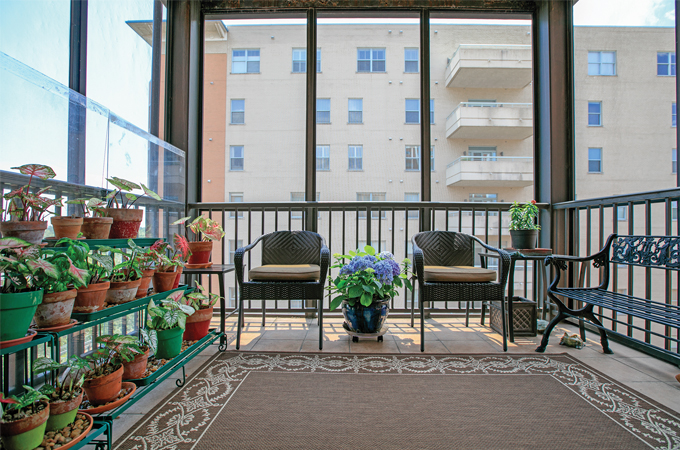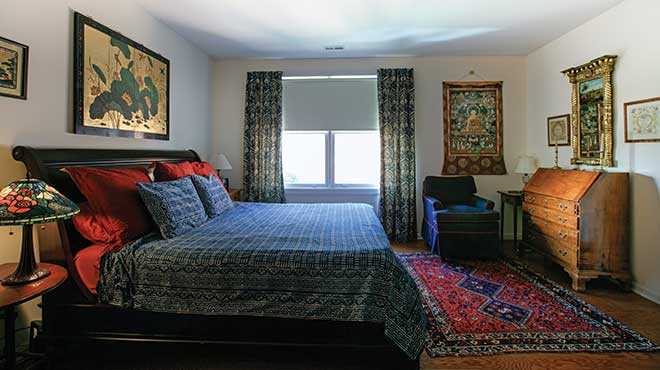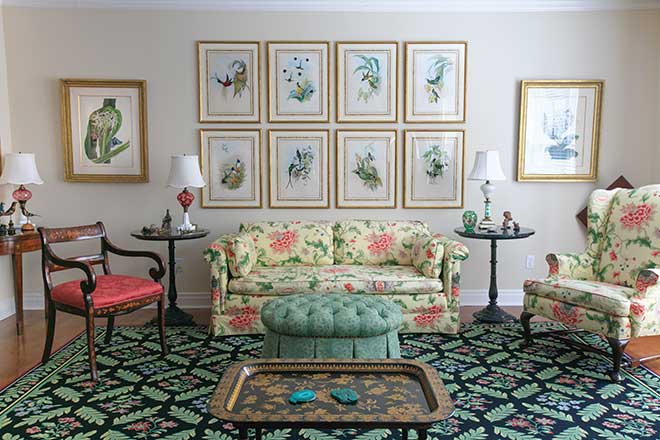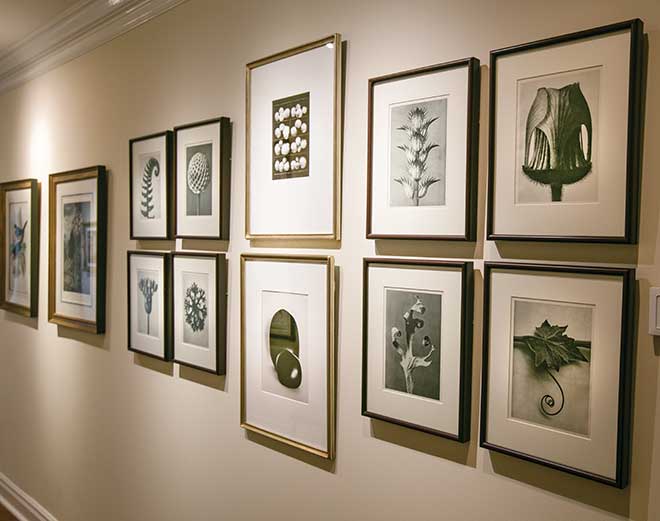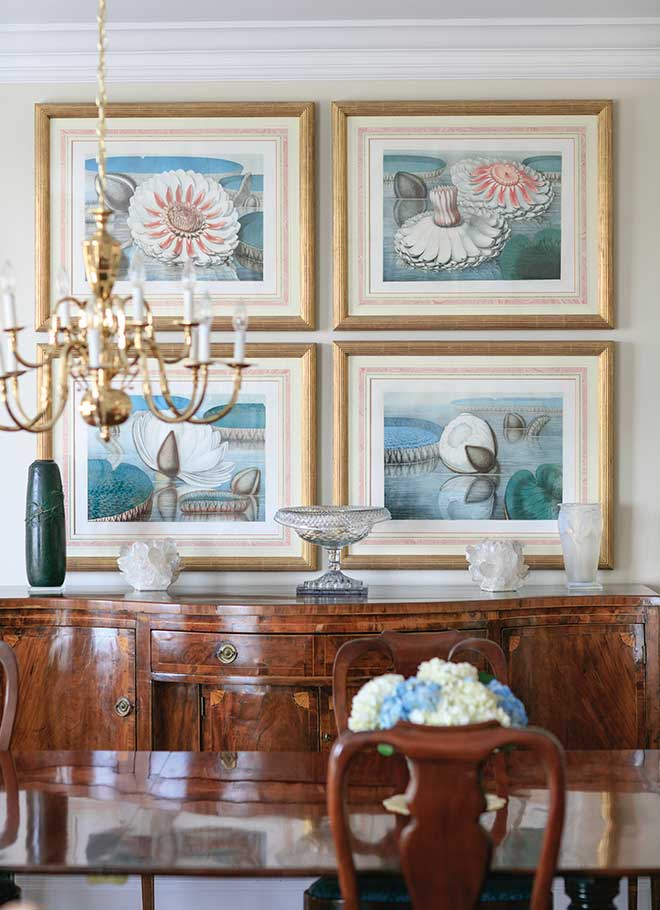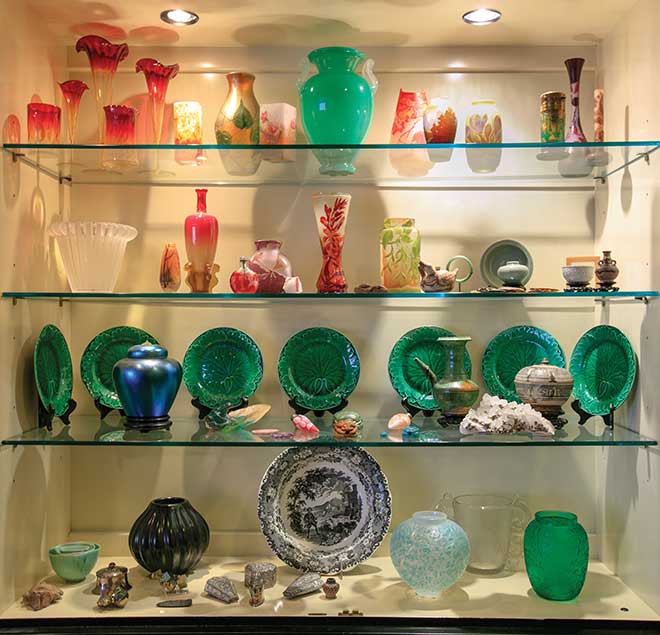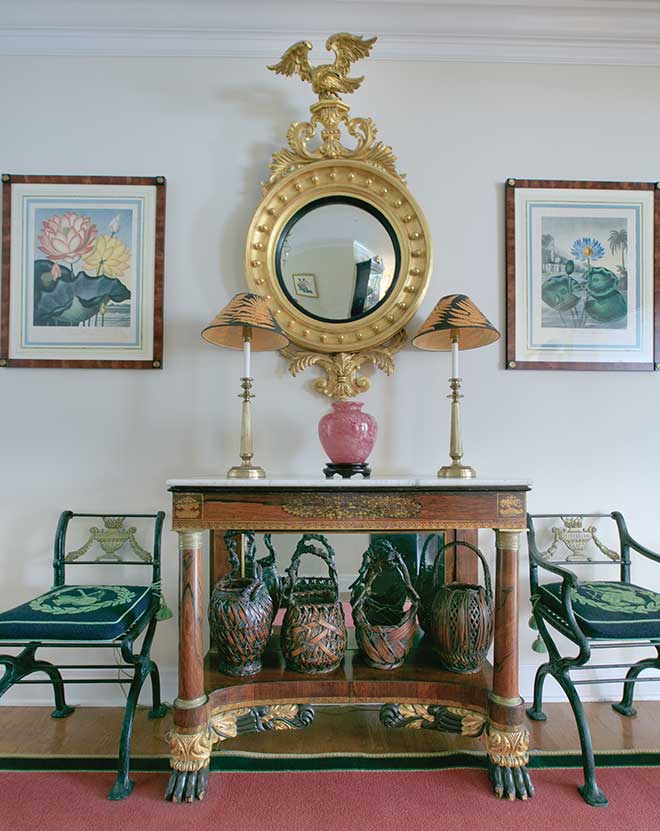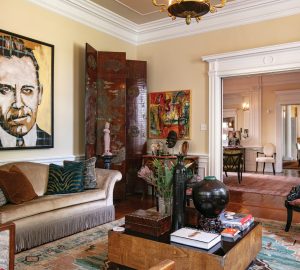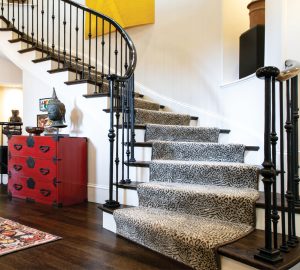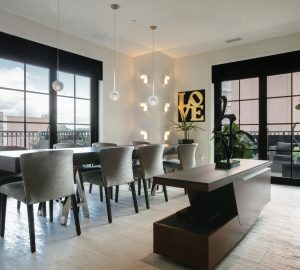Surrounding yourself with beautiful things you love is one of the pleasures of decorating a home. When his wife’s health prompted one St. Louisan to move to a freestanding home to a more manageable Clayton condo, he made sure to find a space that could fit all the things the couple loved best.
T&S | How did you decide on this property?
Homeowner | We had a friend who lives here, and I knew it would be easy for my wife to get around. So I took a look and liked it. Our condo is on the fifth floor, but when you park on the lower level, you can immediately get into an elevator with a wheelchair if you need to.
T&S | How did you make the space feel like home?
H | We moved most of what was in our house to this apartment—we even made the rugs fit. That’s part of the reason we wanted this unit: It would allow us to keep the things we had and liked. My wife, now deceased, was ill and somewhat confused when we moved, and I think retaining the old things made it much more tolerable for her to leave her home.
T&S | What are your favorite features or rooms?
H | I use the den often, because there’s a TV there and it’s a nice space to sit. I entertain a lot here, too—the living room combined with the dining room provides plenty of room to have people over. I also love my large kitchen.
T&S | It looks like you’ve filled the space with antiques. Are you a collector?
H | We’ve collected antiques for years. We started with furniture in the ’70s and later started collecting prints. I got involved because it was something my wife enjoyed doing and she taught me to like it, too. We traveled a lot to find things we like. We picked out pieces carefully and never bought casually.
T&S | Any areas in particular you traveled to?
H | Mostly around the United States—we’d go to New York City a few times a year. We purchased mostly American things. We also bought local pieces, especially at the antique show The Repertory Theatre used to host.
T&S | Is there a particular type of antique you gravitate toward?
H | Pieces from the Federal period. It’s a graceful and delicate look, and we found it very beautiful.
T&S | What are some of your favorite pieces?
H | I like our glass collection. I had an aunt who collected French cameo glass, and she introduced us to that. We then ended up buying some ourselves. It’s an amazingly complicated process to produce: You have to fuse together different layers of glass and then cut away the most superficial layer with carving tools or acid to etch away the surface. The piece ends up with all these different layers. I just love the way it looks.
T&S | Tell me about your bird prints.
H | We’ve collected a lot of botanical and bird prints mostly from around 1800 to 1850, but we also have some that go as far back as the 1600s. The birds are from around 1850. They’re English and are hand-colored prints of paintings. The two larger ones were painted by an English woman who then had her prints done in 1835 by the same company Audubon used. Audubon liked her work so well that he bought her series.
T&S | What appeals to you about the botanical prints?
H | We always enjoyed being in nature. We had a large garden at our previous home. I grew orchids in my greenhouse, and my wife did outdoor gardening—we both loved flowers and visited a lot of gardens on vacations. Birds are a natural extension of flowers. I believe the things you collect must be interesting and beautiful to you—beauty is always personal.
T&S | Your screened-in porch looks lovely!
H | That space is great for sitting outside and enjoying nature. I like to have breakfast, sip coffee and read out there.





